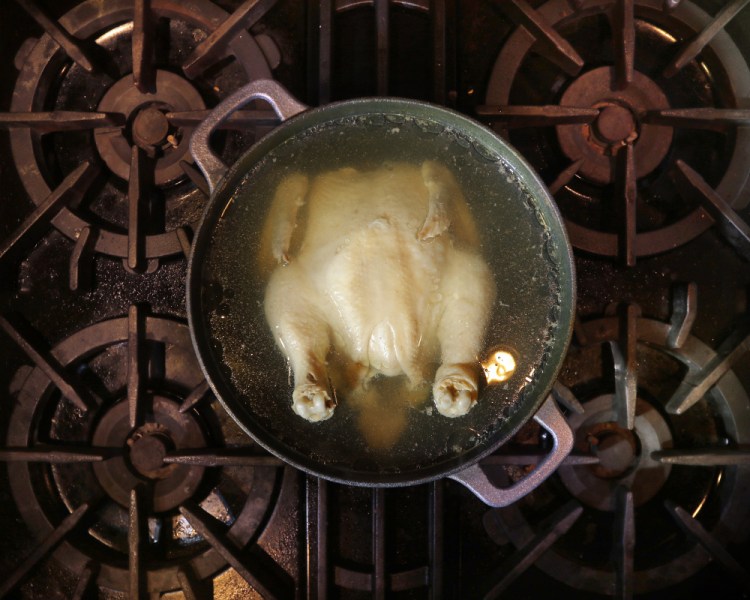Holding a hot cup of tea on a cold December morning is a lesson in the power of residual heat. Understanding how to harness that energy in your kitchen for more than just warming your hands will make you a greener cook.
Residual cooking – also called carry- over cooking – is when food continues to cook after it has been removed from a heat source. The heat held within the food itself raises its overall temperature before it starts to cool down. It’s a gentler, radiating heat that equalizes the temperature throughout the food.
In culinary school, I was taught to make accommodations for residual heat so that grilled steaks would end up cooked as ordered and green vegetables were not reduced to gray mush. The temperature of a resting steak or chop will rise 5 to 10 degrees and a large roast will cook another 15 degrees because of residual heat. Many green vegetables – green beans, snow peas, broccoli and kale, to name a few – need a few minutes to cook to crisp tender perfection. So chucking them into the pot once you’ve brought the salted water in it to a boil and have turned off the heat will provide plenty of heat to cook them.
More recently, I’ve learned to seek out and take advantage of residual heat sources throughout my kitchen in order to decrease my fossil fuel consumption as I poach fish or chicken (see recipe), bake cookies, scramble eggs, steam rice or warm sauces. My primary sources are my heavy-bottomed pans, ceramic baking dishes, cooling oven, stove-top grates, make-shift pan lids and the top of my refrigerator, the coziest place for dough to rise given that the motor is always running.
If there is a cook on your holiday shopping list, I suggest buying him or her cast-iron skillets or their enameled Dutch oven counterparts. They make great green gifts as both hold onto heat better than thinner aluminum-based cookware and therefore help promote carry-over cooking. That said, cast iron is not the best initial conductor of heat so it’s best to warm such pans either in an already hot oven or over a burner equal in size to the pan. Ceramic and glass baking dishes (another solidly green gift) conduct and retain heat better than metal so you can reduce oven temperatures by 25 degrees and count on residual cooking when you pull them out of the oven.
When I bake – mostly in or on aluminum-based cake pans or cookie sheets – I turn my well-insulated oven off with about 20 percent of the cooking time remaining and let my cookies, bars and cakes coast to the finish line – without opening the oven door, of course. I’ve also learned to keep the timer running so that I don’t forget altogether that the baked good is still in the oven so they don’t burn.
I use my cast-iron skillets (which live on my stovetop for easy access) as a makeshift pan covers when cooking either potatoes or pasta because it serves as an ideal spot to warm milk and butter for mashed potatoes or a tomato sauce for pasta. The residual heat held in the stovetop burner grate used to boil water for green vegetables provides the perfect temperature for making a brown butter and caper sauce in which to dress them.
Finding (and subsequently using) new sources of residual heat in my kitchen has become a personal adventure for me. So far, my exploration has relied on my sense of touch, as in, “Ouch, that’s still hot!” Perhaps, should my very own Santa be reading this, I can suggest that an infrared thermometer would be just the right stocking stuffer this year?
CHRISTINE BURNS RUDALEVIGE is a food writer, a recipe developer and tester, and a cooking teacher in Brunswick. Contact her at: cburns1227@gmail.com.
Copy the Story LinkSend questions/comments to the editors.




Success. Please wait for the page to reload. If the page does not reload within 5 seconds, please refresh the page.
Enter your email and password to access comments.
Hi, to comment on stories you must . This profile is in addition to your subscription and website login.
Already have a commenting profile? .
Invalid username/password.
Please check your email to confirm and complete your registration.
Only subscribers are eligible to post comments. Please subscribe or login first for digital access. Here’s why.
Use the form below to reset your password. When you've submitted your account email, we will send an email with a reset code.